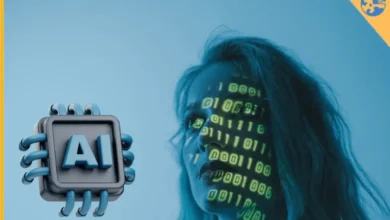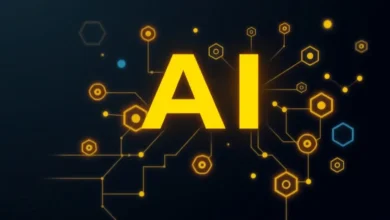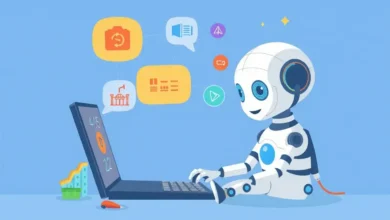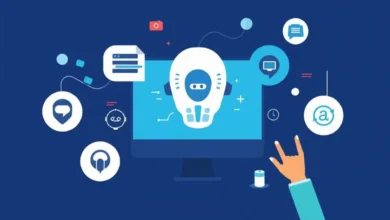Our article today is about Child-friendly AI education, because Artificial intelligence (AI) is rapidly transforming the world around us—from virtual assistants like Siri and Alexa to breakthroughs in healthcare, transportation, and beyond. With such a disruptive impact across industries, ensuring our children understand and feel confident with AI is no longer a luxury; it’s a necessity. Like learning to code or picking up a second language, AI education equips children with vital skills for the future.
But where do you start, especially if you’re a parent or educator without a tech background? Don’t worry—this blog will walk you through child-friendly AI education, its benefits, challenges, and the best strategies for introducing it to children. AI doesn’t have to be intimidating. With the right tools and mindset, you can help children grasp complex concepts in a way that’s fun, engaging, and effective. If you’re ready to take the first step in your child’s AI education journey, read on.
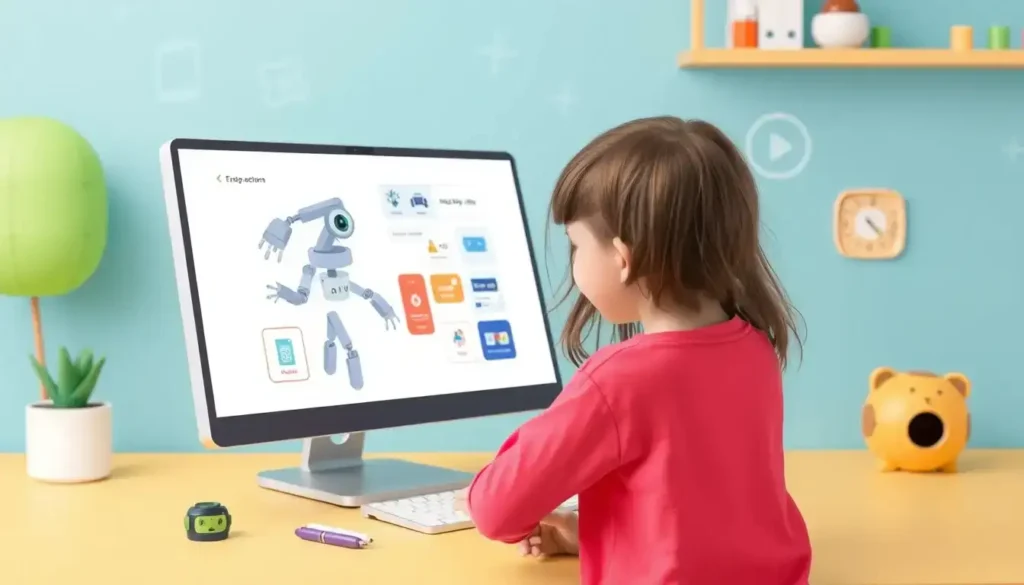
Table Of Contents
- 1 What Is AI? A Simple Explanation for Children
- 2 Why Teach Kids About AI?
- 3 Common Challenges in AI Education—and How to Overcome Them
- 4 Best Tools and Resources for Child-Friendly AI Learning
- 5 Strategies for Parents and Educators to Support AI Learning
- 6 Real-Life Success Stories
- 7 Help Your Child Start Learning AI Today
- 8 FAQ About Child-Friendly AI Education
What Is AI? A Simple Explanation for Children
Before we dive in “Child-friendly AI education”, let’s break down AI into something a child can easily understand.
AI, or artificial intelligence, is when computers and machines learn to do things that normally require human thinking, like recognising faces, playing a game of chess, or suggesting movies you might like.
It’s like having a really clever robot friend who’s good at problem-solving and can work really fast. Unlike humans, AI doesn’t get tired, so it can keep doing tasks over and over without making mistakes (as long as it’s programmed correctly).
For example, if your child has used Google Translate to learn French, asked Alexa about the weather, or watched a TV show recommendation on Netflix, they’ve already interacted with AI.
Explaining these everyday examples is a great way to help kids grasp the concept. AI is becoming part of so many things we use daily, from smartphones to video games, and even cars that can drive themselves!
Here’s an analogy for young learners:
Think of AI as a “super-smart dog.” You give the dog instructions (data), and after training it for a while, the dog learns new tricks (tasks) on its own.
It’s not like a regular dog that just listens to your commands—it’s clever enough to figure out new ways to do things or even solve puzzles you didn’t explicitly teach it!
For example, if you taught the dog to fetch a stick, one day it might surprise you by bringing back a ball instead because it understood the general idea of fetching objects.
Another way to explain it is to think of AI like a student who learns from a teacher. At first, the student needs lots of guidance and examples, but over time, they get better at understanding on their own.
AI works in a similar way—it gets smarter the more information (data) it’s given to learn from.
By grounding the concept in their everyday experiences, children can begin to connect the dots between AI and the world around them.
It’s exciting to think about how AI helps improve so many things we use, and who knows? One day, your child might even help create AI themselves!
Why Teach Kids About AI?
Introducing AI education early and begin early Child-Friendly AI Education step, offers a range of benefits, from cognitive development to uncovering hidden talents. Here are some reasons why it’s worth exploring:
1. Builds Critical Thinking Skills
AI problem-solving often requires identifying patterns, making decisions, and thinking creatively, all of which sharpen critical thinking skills.
2. Encourages Curiosity and Creativity
AI stimulates curiosity by introducing children to questions like “How does AI learn?” or “Can machines think like humans?” This curiosity drives creative exploration, whether it’s building a chatbot or designing a robot.
3. Prepares for Future Careers
In this child-friendly AI education, According to the World Economic Forum, roles in AI, machine learning, and data science are some of the fastest-growing fields globally.
For kids today, child-friendly AI education is preparation for thriving in tomorrow’s job market.
4. Keeps Kids Aware and Empowered
AI impacts almost every aspect of modern life. By learning about AI, children become informed users of technology who can confidently understand, question, and improve the systems they interact with.
The earlier kids are introduced to AI with child-friendly AI education step , the more empowered they’ll be to use it as both creators and decision-makers, not just passive consumers.
Common Challenges in AI Education—and How to Overcome Them
While the advantages of AI education are clear, the journey comes with potential obstacles, especially for parents and educators new to the topic.
In this post about child-friendly AI education, here’s how to address them:
- “AI Concepts Are Too Hard for Kids”
Remember, AI concepts don’t need to start with heavy technical jargon. Use child-friendly analogies and hands-on projects, like teaching them to “train” an AI by giving it simple tasks like recognising their favourite Pokémon.
- Lack of Time or Resources
Many parents worry they don’t have the time or knowledge to support AI learning. The good news? Accessible tools (more on this below) and bite-sized lessons make it simple to integrate AI education into a family or classroom routine.
- Fear of Screen Time Overload
Digital learning doesn’t have to mean endless hours behind a screen. In child-friendly AI education, many AI activities encourage balance, with offline tools like books, worksheets, and creative role-playing games that explain machine learning without requiring a computer.
By tackling these challenges of child-friendly AI education step by step, you can make AI education approachable, attainable, and more fun.
Best Tools and Resources for Child-Friendly AI Learning
When it comes to teaching kids about AI, there’s no shortage of resources that are safe, fun, and built specifically for beginners.
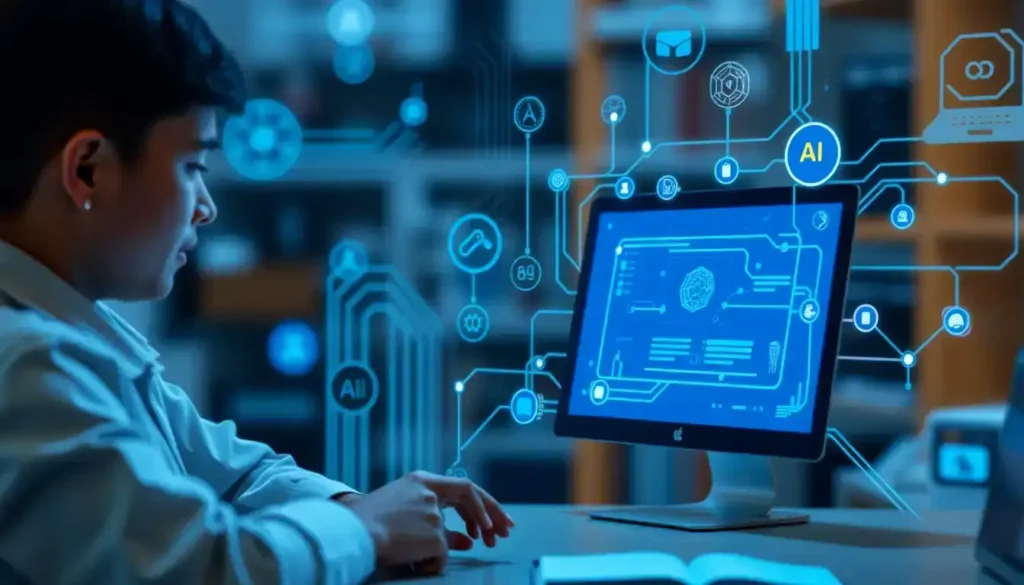
These tools and programs are designed to simplify complex concepts, making AI approachable and exciting for young learners. Here are some of the most popular options:
1. “Teachable Machine” by Google
This free tool for child-friendly AI education is a very fantastic introduction to machine learning. Kids can train their own AI models just by uploading pictures, audio files, or video clips.
The platform of child-friendly AI education walks them through the process step-by-step, allowing them to create projects like gesture recognition or sound classification. It’s a hands-on way to show how AI learns and improves based on data.
2. Scratch AI Extensions
Scratch, one of the most well-known coding platforms for kids, now offers AI add-ons that make learning even more exciting.
With these extensions, children can build interactive animation projects that use voice or image recognition.
For instance and for child-friendly AI education , they can program a game where characters react to speech or design stories that respond to visual inputs, all while gaining insights into how AI operates.
3. AI for Kids by MIT Media Lab
This program for child-friendly AI education goes beyond simple coding and dives into the broader world of AI.
Through a combination of engaging tutorials and easy-to-follow exercises, children can explore topics like machine vision, neural networks, and natural language processing in this step of child-friendly AI education .
It also encourages them to think critically about ethical questions, such as how AI impacts society and decision-making.
4. Books on AI
For screen-free learning, AI-themed books like “Hello Ruby—AI Adventure” introduce kids to artificial intelligence concepts through stories, illustrations, and creative activities.
These books are perfect for young readers and their parents, offering an imaginative and relatable way to teach foundational ideas like algorithms, training data, and problem-solving.
5. Robotics Kits
Robotics kits like Lego Mindstorms and Sphero combine hands-on creativity with AI learning. Kids can build their own robots and program them to carry out tasks, respond to voice commands, or navigate mazes.
These kits not only teach programming and engineering skills but also demonstrate how AI enables machines to “think” and make decisions. They’re ideal for sparking curiosity and innovation.
6. AI4K12 Framework
Recommended for educators, the AI4K12 Framework is a structured guide to teaching artificial intelligence to K–12 students.
It organizes AI learning into five big ideas: perception, representation, learning, natural interaction, and societal impact.
Designed to align with educational standards, this framework provides a roadmap for introducing AI concepts in a way that’s age-appropriate and easy to integrate into existing curricula.
These resources are not only accessible but also designed to make learning AI an enjoyable and interactive experience for kids with child-friendly AI education.
Whether they’re experimenting with AI-powered tools, coding their own projects, or building robots, these options will inspire curiosity and lay the foundation for a deeper understanding of artificial intelligence in our ever-evolving world.
Strategies for Parents and Educators to Support AI Learning
Now that we’ve covered what to teach in this post about child-friendly AI education, let’s talk about how to teach it.
In this article about child-friendly AI education, here are some practical and engaging ways for parents and educators to introduce AI concepts effectively:
- Start with Everyday Examples
Begin by pointing out where AI is already a part of daily life. For example, in this post about child-friendly AI education, explain how Netflix recommends shows or movies based on what you’ve watched and liked, using algorithms to predict what you might enjoy next.
Similarly, highlight how autocorrect or predictive text on your phone suggests words or phrases as you type, learning from your writing habits to become more accurate over time.
You can also mention how virtual assistants like Alexa or Siri understand and respond to voice commands, or how online shopping platforms recommend products based on your browsing history.
Highlighting these familiar examples helps kids see AI as something they already interact with in their everyday lives, making the concept feel more approachable and less intimidating.
- Keep Activities Playful
Gamify the learning experience to keep it fun, engaging, and interactive. For instance, and for inderstand more “child-friendly AI education”, introduce friendly challenges that encourage creativity and hands-on exploration, like creating simple machine learning models using beginner-friendly platforms such as Teachable Machine.
These platforms allow kids to easily experiment with concepts and see their ideas come to life. You could also turn AI into an exciting guessing game, where kids predict how features like facial recognition or voice commands work.
Afterward, guide them through building their own simplified models to test their understanding and spark curiosity.
Add fun rewards or collaborative activities to make the experience even more memorable and enjoyable, helping kids see the practical and playful side of AI.
- Encourage Questions
Foster curiosity by encouraging kids to think critically about the technology they interact with daily.
Start by asking open-ended questions like, “How do you think Spotify knows which songs to play next?” or “Why does Alexa respond only when you say her name?”
In this post about child-friendly AI education, these questions not only spark their interest but also help them see the hidden systems and algorithms behind the tools they use.
By prompting them to consider how these technologies work, you’re inspiring them to explore the world of AI, question how it impacts their lives, and develop a problem-solving mindset that can fuel future learning.
You could even extend the conversation by discussing related topics, like how AI learns from data or how technology is designed to assist us, making these exercises both fun and educational.
- Collaborate with Other Kids
Learning in teams fosters essential skills like problem-solving, effective communication, and creativity.
When students work together on group projects, such as coding a chatbot or building simple AI models, they not only gain technical knowledge but also develop teamwork abilities.
These collaborative projects make the learning experience more dynamic and engaging by encouraging active participation and hands-on practice.
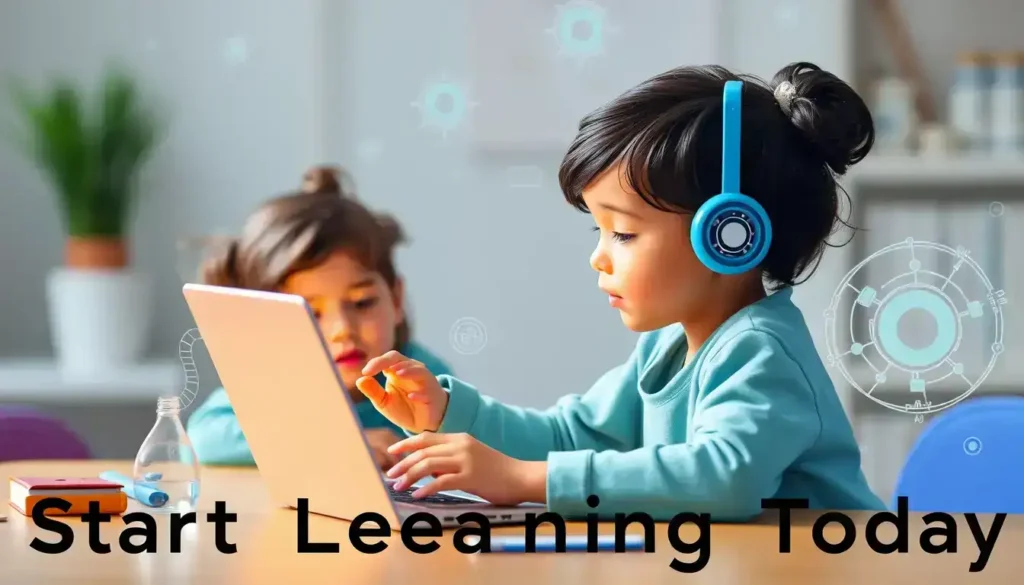
Working in groups also allows kids to encounter diverse perspectives, exchange ideas, and learn from one another, which helps them build empathy and adaptability—skills that are increasingly important in today’s fast-paced, tech-driven world.
Through teamwork, students can tackle challenges more effectively while also creating a supportive environment that inspires innovation and mutual growth.
- Promote Ethical Awareness
AI isn’t just about technology—it’s also about responsibility and the impact it has on society. Teaching kids about fairness, transparency, and ethical AI practices is essential in helping them understand how this technology shapes the world around them.
Use language they can understand to spark these conversations. For example, explain why it’s important for AI to treat everyone equally, regardless of their background, or discuss why AI should always be honest about how it makes decisions and what data it uses.
So in child-friendly AI education, you can even use relatable examples, like discussing the fairness of a game or a school activity, to connect these concepts to their everyday experiences.
These discussions help kids think critically about the social implications of AI, encouraging them to question and reflect on how technology can be used responsibly.
By engaging with these ideas from child-friendly AI education, kids can begin to understand their role in shaping a future where AI benefits everyone.
- Experiment with Visuals
Many kids learn best through visuals and hands-on activities, as they help make abstract concepts more concrete and easier to understand.
By incorporating tools like Scratch, a visual programming platform, or robotics kits into their learning, you can create engaging and enjoyable experiences that spark curiosity.
For example, Scratch allows kids to design interactive animations or even an AI-powered game, teaching them fundamental coding concepts in a fun, approachable way.
Similarly, robotics kits enable children to build and program robots to follow commands, providing a tangible way to explore problem-solving, logic, and engineering.
These kinds of projects not only make complex ideas more accessible but also encourage creativity, critical thinking, and collaboration among young learners.
- Use Stories to Explain Concepts
In this post about Child-Friendly AI Education, stories and analogies can make technical topics more relatable and easier to understand, especially for younger audiences.
- For instance, you could explain an AI algorithm by comparing it to a detective piecing together clues to solve a mystery—an analogy that helps simplify complex processes like pattern recognition or decision-making.
- By framing AI in familiar terms, it becomes less intimidating and more engaging for a best child-friendly AI education.
- Additionally, in child-friendly AI education, sharing real-world stories about AI advancements, like self-driving cars that navigate through traffic or AI-powered tools improving healthcare through early disease detection, can capture the imagination of kids.
- These examples not only make the topic more interesting but also inspire them by showing the broader, meaningful impact of AI technology on the world and how it’s shaping the future.
Such approaches help bridge the gap between abstract concepts and practical, real-world applications, making AI accessible to everyone.
- Integrate AI with Other Subjects
AI can be a great way to connect STEM with other areas of learning, making it a valuable tool for interdisciplinary education.
- For example, you can tie AI concepts to math by teaching probability through AI decision-making processes, such as how algorithms make predictions based on data.
- In science, students can explore how AI is used in fields like medicine or environmental monitoring to solve real-world problems.
- Similarly, AI can be introduced in art by examining tools like DALL-E, which generate images based on text prompts, allowing students to discuss creativity and technology.
- Integrating AI into various subjects not only highlights its versatility but also inspires students to think across disciplines, fostering a deeper understanding of both AI’s potential and the interconnected nature of knowledge.
By cultivating curiosity, introducing relatable examples, and making the learning process interactive, parents and educators can turn Child-Friendly AI Education into a meaningful and exciting journey for kids.
With these strategies, you can empower the next generation to understand and shape the future of technology.neration to understand and shape the future of technology.
Real-Life Success Stories
Around the world, kids are thriving as they dive into the exciting world of AI, creating innovative projects that solve real problems:
- Sophie in Sydney, AU
At just 11 years old, Sophie developed a simple AI bot during her computer science class to help her classmates find library books more easily.
The bot uses a keyword search system to recommend books based on topics or genres, making the library more accessible to everyone.
Her innovative solution earned her school a prestigious technology award, and Sophie is now inspiring her peers to explore the possibilities of AI.
- Mateo from Vancouver, CA
Mateo, a creative 12-year-old, used Scratch’s AI extension to design an interactive game that recognizes facial expressions.
The game adapts its storyline based on whether the player is smiling, frowning, or showing surprise, creating a personalized and engaging experience.
His project was such a hit that it became the centerpiece of his school’s annual tech fair, where he wowed students and teachers alike with his ingenuity.
These stories show that children are not only capable of understanding AI but can also excel when given the right tools and encouragement. With the right guidance and opportunities, your child could be the next to create something incredible!
Help Your Child Start Learning AI Today
AI is reshaping our world—and equipping our children with the tools to understand and create with this technology is one of the best gifts we can offer them.
Whether you’re a parent igniting curiosity or an educator inspiring the next generation, take the leap into Child-Friendly AI Education. Start small, explore resources, and spark a lifelong love of learning.
Have you already started this exciting adventure? In this article about Child-Friendly AI Education, we’d love to hear about it! Share your child’s success story with us—your experience could inspire other families to begin their AI learning journeys.
FAQ About Child-Friendly AI Education
Is there a kid friendly AI?
Yes for Child-Friendly AI Education, there are many kid-friendly AI tools designed to support children’s learning in a safe and engaging way. Educational AI software personalizes learning to make it fun, while virtual assistants like Alexa and Google Assistant help kids with questions, games, and homework.
How to educate children about AI?
To teach kids about AI, start with examples like voice assistants. Explain how they work, cover types like machine learning, and highlight benefits like simplifying tasks. Discuss concerns about AI’s impact on jobs and daily life. Adding AI to coding classes can also help them understand it better.
What is the AI that teaches kids?
Child-Friendly AI Education, include interactive platforms, coding games, and virtual tutors. These tools adapt to a child’s needs, offering personalized learning with fun, engaging features. Popular options like Osmo, Sphero SPRK+, and Wonder Workshop’s Dash robot make learning about AI enjoyable for kids.
Is there an interactive AI for children?
AI tools for children, like Woebot and AILA Sit & Play, use natural language processing to educate and engage kids through games and activities. Virtual assistants like Alexa and Google Assistant also offer interactive learning. These tools make learning fun and help kids build key skills.
How can parents ensure that their children are using safe AI?
Parents can help ensure their children interact with safe AI by thoroughly researching any tool or platform before granting them access.







